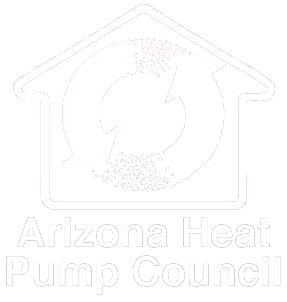
Your heating, ventilation and air conditioning (HVAC) system is a highly complex, mechanical, electrical and engineering marvel – a large, multi-component appliance installed inside and outside your house. For most homeowners, air conditioning is the mysterious, essential, unseen magic trick that turns a hot house into a cool desert sanctuary. With summer on the way, you have to ask yourself, where would Arizona be without AC?
7 Major Components in Your Air Conditioner
There are seven major components (and many smaller ones) that make up an air conditioning system. Each component is critical to the overall successful operation of your AC. It takes years of study and apprenticeship for service techs to gain the knowledge required to service and install HVAC systems. As a homeowner, you can’t possibly be expected to know how all these components work or the proper way to fix them. Similar to an automobile, most people don’t understand how their car parts work, they just know when they turn the key, the car starts up and off they go. When it comes to automobiles and home air conditioning systems, the most important thing to know is the phone number of a great service tech (that’s Cool Blew for AC!)
It can be useful to have a general understanding of the major components in your air conditioner. It will help reduce some of the confusion when your service tech gives you an evaluation of your system. We’ve all heard these terms at one time or another. Here’s a brief description of the major parts and the functions they perform:
- Blower – Air conditioning is a continuous process of removing heat from the warm air inside your home. The cycle of cooling begins with the blower circulating cold air through the vents into the rooms in your home and pulling warm air back through the supply register/return ducts for heat and humidity extraction and cooling.
- Evaporator Coils – Refrigerant flows through the evaporator coils and absorbs/extracts heat and humidity from the air in a process known as phase conversion.
- Compressor – The compressor, which is the pumping heart of the cooling cycle, circulates refrigerant (now in a gaseous state) under extreme pressure until it is super-heated, then the super-heated gas travels to the condenser coils. As the gas releases heat it turns back into a liquid. It’s important to note, the compressor is the most expensive component in your system.
- Condenser Coils – While the evaporator coils pick up heat from air inside your home, the evaporator coils release the heat into the outside air. Due to high pressure and corrosion, condenser coils can be susceptible to pinhole leaks which can cause loss of refrigerant.
- Fan – Sometimes referred to as the condenser fan, intense heat surrounding the condenser coils is dispersed by a fan that blows outside air across the coils. Though the fan is protected by a grill, high winds and severe storms can blow leaves and debris into the fan, which should be checked.
- Air Filter – Air filters are an extremely important component of your air conditioning system because they form a shield of protection against dust, pollen, dander and other particulate irritants and pollutants. Air filters are crucial to your indoor air quality and should be replaced often.
- Thermostat – As the main controlling device for your complicated HVAC system, the thermostat is the focal point for your home air conditioner. New Wi-fi enabled smart thermostats provide more options for energy savings and allow you to change the settings on your thermostat from your mobile device. This can be an incredibly useful tool when your plans change, or you go on a trip.
Time to Check the Components of Your Air Conditioner?
In Arizona, trouble-free air conditioning is essential to the enjoyment of summer, which is not far off. As the days get warmer, people start turning on their air conditioners. In many cases, the AC has been off for months and can benefit from a spring service tune up. Give us a call, and we’ll be happy to check your system before the big heat rolls into Phoenix.






